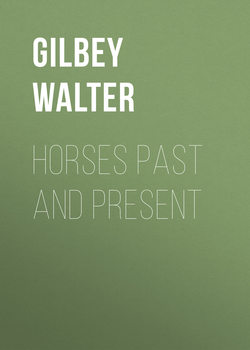Читать книгу Horses Past and Present - Gilbey Walter - Страница 11
EDWARD III. (1327-1377)
ОглавлениеEdward III., to meet the drain upon the horse supply caused by his wars with Scotland and France, bought large numbers of horses on the Continent; more, it would appear, than his Treasury could pay for, as he was at one time in the Count of Hainault’s debt for upwards of 25,000 florins for horses. These were obviously the Great Horses for which the Low Countries were famous; all the animals so imported were marked or branded. Edward III. organised his remount department on a scale previously unknown in England. It was established in two great divisions under responsible officers, one of whom had charge of all the studs on the royal manors north of the Trent, the other exercising control of those south of that boundary; these two custodians being in their turn responsible to the Master of the Horse.
There is ample evidence to prove that Edward III. took close personal interest in horse-breeding, and it is certain that the cavalry was better mounted in his wars than it had been at any previous period. The Great Horse, or War Horse, essential to the efficiency of heavily armoured cavalry, was by far the most valuable breed and received the greatest meed of attention; but the Wardrobe Accounts of this reign contain mention of many other breeds or classes of horse indispensable for campaigning or useful for sport and ordinary saddle work – palfreys, hackneys, hengests, and somers, coursers, trotters, hobbies, nags, and genets.
The distinction between some of these classes was probably somewhat slight. The palfrey was the animal used for daily riding for pleasure or travel by persons of the upper ranks of life, and was essentially the lady’s mount, though knights habitually rode palfreys or hackneys on the march, while circumstances allowed them to put off for the time their armour. The weight of this, with the discomfort of wearing it in the cold of winter and heat of summer, furnished sufficient reason for the knights to don their mail only when actually going into action, or on occasions of ceremony.
“Hengests and somers” were probably used for very similar purposes, as more than once we find them coupled thus: these were the baggage or transport animals, and were doubtless of no great value. “Courser” is a term somewhat loosely used in the old records; it is applied indifferently to the war horse, to the horse used in hunting, and for daily road work, but generally in a sense that suggests speed. “Trotters,” we must assume, were horses that were not taught to amble; and the name was distinctive at a period when all horses used for saddle by the better classes were taught that gait. Edward III.’s Wardrobe Accounts mention payment for trammels, the appliances, it is supposed, used for this purpose, and at a much later date in another Royal Account Book, we find an item “To making an horse to amble, 2 marks (13s. 4d.).” The amble was a peculiarly easy and comfortable pace which would strongly commend itself to riders on a long journey. Hobbies were Irish horses, small but active and enduring; genets were Spanish horses nearly allied to, if not practically identical with, the barbs introduced into Spain by the Moors. The animal described as a “nag” was probably the saddle-horse used by servants and camp followers.
